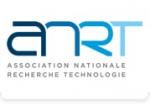Quantifying the effect of deviatoric stress on phase equilibrium, a multiscale approach in a geodynamic perspective (M2 inernship with possibility of PhD thesis)
| ABG-134260 | Master internship | 6 months | 600€ |
| 2025-11-07 |
- Physics
- Earth, universe, space sciences
Employer organisation
L'Institut P' est une Unité propre de recherche du CNRS située à Poitiers, en partenariat avec l'université de Poitiers et l'ISAE-ENSMA. Depuis 2023, l'Institut P' est fédéré au sein de l'Institut Fédératif de Recherche Mathématiques, Physique, Sciences de l’ingénierie et du numérique de l'université de Poitiers.
Description
Scientific description:
Phase transformations (PT) shape the formation of rocks and determine the mechanical properties of many engineered materials, making them a key area of research in both Earth Science and Metallurgy. When subjected to changes in environmental conditions such as pressure or temperature, rocks and metals undergo PTs to achieve thermodynamic equilibrium. In minerals, investigation of mineral assemblages provides essential insights into their conditions of formation. The mineral phases can indeed be used to trace significant geodynamic processes, such as orogenesis, rifting or subduction. In metallic materials, the development of multiple phases is critical for optimizing performance and is an important ingredient in the design of high performance parts in aeronautics, energy, transport, and plenty of other domains. The theory behind the aforementioned PTs relies on the assumption that the stress has the same effect on phase equilibrium as equivalent hydrostatic pressure, meaning the effects of deviatoric stress are neglected. Such hypothesis, however, have recently triggered discussions in both Earth science and Metallurgy. In fact, there are now several experimental results that show non-trivial relation between mechanical pressure and mineral reactions [1], including the quartz/coesite transformation [2], a PT emblematic of Earth’s Science. Similarly, the α/ω transformation of titanium has been shown to be influenced by the applied stress [3].
The master internship and PhD thesis will take place at PPRIME Institute (Poitiers, France) in the context of the international ANR project MULTI-STEP: Multiscale Stress-driven Thermodynamic Equilibrium Predictions, in collaboration with the Centre de Mise en Forme des Matériaux (Mines-ParisTech, Sophia Antipolis, France), the Heidelberg University (Germany) and the Goethe University (Frankfurt, Germany). This project aims at understanding the effect of deviatoric stress on the phase fraction equilibrium of titanium and silica. It proposes to overcome the classical hypotheses for phase equilibrium calculations using a multiscale numerical approach, from atomistic to large-scale thermomechanical modeling, coupled with micromechanical experiments (see figure below).
The master internship and PhD thesis will mostly focus on the WP1 of the MULTI-STEP project lying on atomic scale simulations. The main objective of this WP is to provide deviatoric stress-dependant phase diagram for both titanium and silica. In this aim, atomistic simulations will be used in combination with state of the art approaches for computing Gibbs free energies, such as thermodynamics integration [4] or umbrella sampling [5]. The atomic scale approach will also allow to obtain two main ingredients needed for the homogenization performed in WP5. First, the atomistic simulation will allow to derive equations of state for all phases of interest, which will be used to compute the volumetric part of eigenstrains. Second, the bicrystallography will permits from the atomic structure of the crystals to infer the deviatoric part of the eigenstrains related to the different phase transformations.
Depending on the progress of the subject and the candidate's interests, participation in other WPs of the project may be considered.
References:
[1] : S. Cionoiu and et al. “Impact of interseismic deformation on phase transformations and rock properties in subduction zones”. In: Sci. Rep. 9.1 (2019), p. 19561.
[2] : B. Richter and et al. “Stresses and pressures at the quartz-to-coesite phase transformation in shear deformation
experiments”. In: J. Geophys. Res.: Solid Earth 121.11 (2016), pp. 8015–8033.
[3] : K. Dang and et al. “The role of deviatoric stress and dislocations on the α to ω phase transformation in Ti”. In: Acta
Mater. 244 (2023), p. 118510.
[4] : P. Y. Chew and A. Reinhardt. “Phase diagrams—Why they matter and how to predict them”. In: J. Chem. Phys. 158.3 (2023).
[5] : Kästner, J. “Umbrella sampling”. Comp. Mol. Sc., (2011), 1(6), p. 932-942.
Techniques/methods in use: Molecular dynamics, Ab-Initio Molecular Dynamics, Thermodynamics Integration, Umbrella Sampling
Profile
Knowledges in material physics, thermodynamics, interest on numerical simulations
Starting date
Vous avez déjà un compte ?
Nouvel utilisateur ?
Get ABG’s monthly newsletters including news, job offers, grants & fellowships and a selection of relevant events…
Discover our members
 TotalEnergies
TotalEnergies  SUEZ
SUEZ  Nokia Bell Labs France
Nokia Bell Labs France  CASDEN
CASDEN  ANRT
ANRT  CESI
CESI  Ifremer
Ifremer  Institut Sup'biotech de Paris
Institut Sup'biotech de Paris  PhDOOC
PhDOOC  MabDesign
MabDesign  Généthon
Généthon  ADEME
ADEME  Tecknowmetrix
Tecknowmetrix  ONERA - The French Aerospace Lab
ONERA - The French Aerospace Lab  Aérocentre, Pôle d'excellence régional
Aérocentre, Pôle d'excellence régional  MabDesign
MabDesign  Laboratoire National de Métrologie et d'Essais - LNE
Laboratoire National de Métrologie et d'Essais - LNE  Groupe AFNOR - Association française de normalisation
Groupe AFNOR - Association française de normalisation  ASNR - Autorité de sûreté nucléaire et de radioprotection - Siège
ASNR - Autorité de sûreté nucléaire et de radioprotection - Siège

